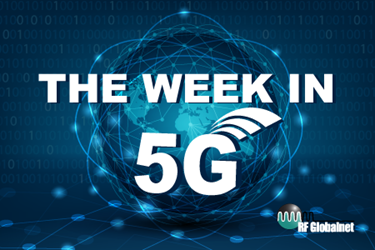The Week in 5G — U.S. Telecoms Delay 5G Rollout And Brazil Spectrum Auction Rakes In $8.5B

By Abby Proch, former editor

Last week, AT&T and Verizon announced plans to delay their 5G rollout from Dec. 5 to Jan. 5 amid mounting concerns from air safety officials that their use of a portion of the C-band abutting spectrum used by aviation navigation equipment could cause interference. For its part, the Federal Aviation Administration (FAA) has not yet given any specific directives related to the issue, but it is said to be planning a special bulletin on the matter, according to the Wall Street Journal. The longstanding concern has been that a buffer zone needs to exist between the two parties in order to prevent interference that could cause flight delays and cancellations.
In auction news, Brazil collected $8.5 billion in bids at its latest spectrum auction — drastically overshooting the initial target of $1.9 million, according to Developing Telecoms and U.S. News & World Report. The 3.5 GHz garnered the biggest bids for both local and national permits, racking up more than $8.44 billion. Most of the funds came from the country’s top three telecoms: Claro Brasil, Telefonica Brasil (Vivo), and TIM Brasil. The auction also brought out six more developing telecoms to compete with the big three. Unsold spectrum from the 26 GHz frequency is expected to be sold off in a future auction.
Despite the push for 5G coverage in Brazil, roughly 10 percent of Brazilian wireless users are still connected via 3G, according to a study published by Anatel, the country’s telecoms regulator, in December 2020. That’s mostly due to a widespread lack of 4G coverage in remote areas, though some users with access to 4G still own cell phones and devices that are not 4G-compatible. 3G technology maxes out at 2 Gbps, effectively excluding millions of users from streaming video or playing online games.
While wireless users are caught in a wholly outdated technology, wireless experts are already looking ahead to what’s next. This week, the first-ever one6G Summit is welcoming industry experts, academicians, and interested parties from around the world to openly discuss 6G research and innovation. The one-day virtual event welcomes Nancy Alonistioti from the National Kapodistrian University of Athens, as the opening speaker. The moderator will be Monique Calisti, the CEO of Martel Innovate. A little over a month ago, the 6G Symposium held its third iteration of its two-day virtual event with conversations on 6G and its relationship with the quantum internet, native AI, machine learning, and UAVs, among other applications.
Not to be left out, India is also preemptively joining the 6G conversation (alongside the U.S., Japan, and China) by forming a new 6G innovation group housed under the country’s Department of Telecommunications (DoT). Also according to the report, the U.S. Congress directed the FCC in the U.S. established a 6G Task Force in July. Japan and China also made strides earlier this year.
Back to 5G, and in a reported world first, the Scotland 5G Centre standalone private network broadcast a sporting event using shared spectrum in the 3.8 GHz to 4.2 GHz. The Centre recently reported that it and partners at the University of Strathclyde broadcast the Monster Energy British Grand Prix MotoGP live from Silverstone on Aug. 29. A handheld camera captured a unique point of view meant to revolutionize how sports fans view a game or, in this case, a race. According to a press release, the real-world exhibition of 5G SA capabilities covered the pit lane, paddock, and starting grid. The live, up-close view of the event opens up possibilities, including on-field and even on-player camera angles. It also raises the possibility of covering both customers and events in more remote locations.
And in military advances, Verizon and Lockheed Martin are collaborating to provide the Department of Defense with 5G.MIL technologies that will provide secure and reliability connectivity to support a network for air, land, sea, space and cyber domains, according to a Verizon press release. The agreement includes a joint research and development lab to design, build, and test 5G technologies. Specifically, the 5G.MIL program is a “robust, 5G-enabled, heterogeneous ‘network of networks’ that integrates military tactical, strategic and enterprise networks, and leverages existing telecommunication infrastructure technology.”
